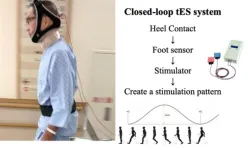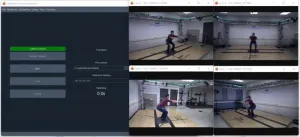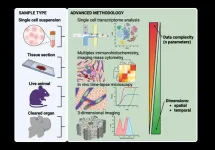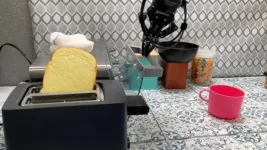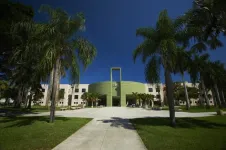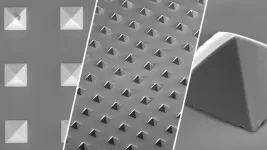(Press-News.org) Gait-related disturbances adversely affect the quality of life of patients with Parkinson’s disease (PD), a condition affecting millions worldwide. Although various pharmacological, surgical, and rehabilitative treatments exist, their effectiveness is limited. Now, a team of researchers from Japan has successfully addressed this limitation. Using a novel neuromodulation approach that incorporates gait-combined closed-loop transcranial electrical stimulation, the team demonstrated significant gait improvements in patients with various neurological disorders including PD.
Parkinson’s disease (PD) is a debilitating neurodegenerative disease characterized by motor function decline, particularly in relation to gait disorders. These gait disorders manifest as decreased step length, reduced arm swing, slow movements, rigidity, and postural instability, which are prevalent among patients with PD. While non-pharmacological approaches like transcranial direct current stimulation show promise in improving motor function, recent research focuses on gait-combined closed-loop stimulation, which synchronizes brain stimulation with the individual's gait rhythm. A recent study published on 9 June 2023 in the Journal of Neurology, Neurosurgery & Psychiatry proposes a novel intervention for gait improvement, thus creating new hope for patients with PD.
“We recently developed a novel neuromodulation approach using gait-combined closed-loop transcranial electrical stimulation (tES) and demonstrated promising gait improvements in patients who are post-stroke. Here, we tested the efficacy of this intervention in patients with Parkinsonian gait disturbances,” explains lead author Ippei Nojima from Shinshu University and Nagoya City University, Japan.
To this end, the clinical researchers from Japan recruited twenty-three patients with PD or Parkinson’s syndrome. All study participants were randomly assigned to receive either the active treatment or a “sham” treatment that mimics the active treatment but does not offer any therapeutic benefit.
During the course of the trial, an electrode carrying a low current (up to 2 mA) was externally affixed to the occipital region of the head. A reference electrode was then placed in the neck region to establish a stable electrical reference point and to complete the electrical circuit. The treatment included performing tES on the cerebellum in a non-invasive manner. The brain side showing severe impact was specifically targeted during the electrotherapy.
“Gait disturbance lowers activities of daily living in patients with PD and related disorders. However, the effectiveness of pharmacological, surgical, and rehabilitative treatments is limited. Our novel intervention might be able to improve physical function for not just patients with PD but also for those with other disabilities,” comments senior author Yoshino Ueki from the Department of Rehabilitation Medicine at Nagoya City University.
The cerebellum plays a key role in gate control. Therefore, the electrical stimulation of this region is likely to exert therapeutic benefits. The therapy showed encouraging results after just ten repetitions. The treatment group showed a significant improvement in gait parameters including speed, gait symmetry, and stride length.
Says Professor Nojima, “These findings showed that gait-combined closed-loop tES over the cerebellum improved Parkinsonian gait disturbances, possibly through the modulation of brain networks generating gait rhythms.”
Interestingly, no patient dropped out during the study. Moreover, patients from both the groups (treatment and sham) showed good and comparable compliance. Side effects such as skin irritation, vertigo, or odd sensations/perceptions were also not observed in any of the volunteering patients. This study has special significance, considering the fact that Japan is witnessing a sharp rise in its elderly population.
“Patients with impacted gait have restricted daily activities. We successfully developed a new non-pharmacological and non-invasive intervention for the rehabilitation of patients with PD and other neurological disorders. Our breakthrough method could be used to restore gait in these patients,” concludes Professor Ueki.
Although the study has certain limitations, it suggests that the personalized brain stimulation, synchronized with individual gait rhythm, can effectively enhance gait function in PD and has the potential to be used as an adjunct therapy for gait rehabilitation.
# # #
About Shinshu University
Shinshu University is a national university founded in 1949 located nestling under the Japanese Alps in Nagano known for its stunning natural landscapes. Our motto, "Powered by Nature - strengthening our network with society and applying nature to create innovative solutions for a better tomorrow" reflects the mission of fostering promising creative professionals and deepening the collaborative relationship with local communities, which leads up to our contribution to regional development by innovation in various fields. We’re working on providing solutions for building sustainable society through interdisciplinary research fields: material science (carbon, fiber and composites), biomedical science (for intractable diseases and preventive medicine) and mountain science, and aiming to boost research and innovation capability through collaborative projects with distinguished researchers from the world. For more information visit https://www.shinshu-u.ac.jp/english/ or follow us on Twitter @ShinshuUni for our latest news.
END
Pollinosis, or hay fever, makes people miserable around the world, and Japanese cedar (Cryptomeria japonica) pollen is a significant cause of the suffering in the 38.8% of Japanese people who are allergic. Japanese cedar is also the country's most important timber species. A single mature tree produces on the order of three hundred million grains of pollen. Saneyoshi Ueno and colleagues investigated the genes required to produce this massive amount of genetic material. Previous research by Ueno’s team identified ...
SAN ANTONIO — August 8, 2023 – Southwest Research Institute is launching its new Engine for Automatic Biomechanical Evaluation (ENABLE™) markerless biomechanics system during the American Society of Biomechanics (ABS) Annual Conference, August 8-11, in Knoxville, Tennessee. ABS attendees can see a demonstration by visiting Booth No. 11.
ENABLE is a user-friendly markerless motion capture system that leverages artificial intelligence, computer vision algorithms and biomechanical modeling. The key advantage of ENABLE is it efficiently captures ...
This review manuscript highlights the relevance of spatially-resolved macrophage phenotyping in liver disease-related research.
The liver is a vital organ heavily populated with macrophages, which represent key players of the innate immune response but also hold key functions in the maintenance of a healthy organ. Liver macrophages are mostly distributed across two populations of different origins and functions during homeostasis and disease: liver resident macrophages (referred to as Kupffer cells, KCs), and monocytic macrophages derived from the bone-marrow (MoMFs). The KC: MoMF ratio, as well as their respective spatial distribution through the liver, are increasingly ...
A study looks at the mechanisms behind genetic variation in the bacteria that cause Lyme disease. Lyme disease is the most common vector-transmitted disease in the United States, with around 476,000 human cases annually. Most Lyme disease is caused by the bacteria Borrelia burgdorferi (Bb), which is transmitted by ticks and can infect a wide range of mammals and birds. Matthew Combs and colleagues analyzed the genetic diversity of Bb, specifically focusing on the pathogen’s outer surface protein C (ospC) gene, a well-known virulence factor that is essential for survival of the pathogen inside the tick and the early stages of infection in vertebrates. ...
***Embargo 14:00 UK / 10:00 BRT / 9:00 ET / 6:00 PT Tuesday, August 8, 2023***
SEATTLE, Wash. August 8, 2023 – 569,000 deaths were linked to bacterial antimicrobial resistance (AMR) in all 35 countries of the WHO Region of the Americas, according to a new peer-reviewed paper published in The Lancet Regional Health – Americas. This analysis on the burden of AMR in the Americas is the most comprehensive yet for the region, providing data for 35 countries, 23 bacterial pathogens, and 88 pathogen-drug combinations.
The ...
Humans are social creatures and learn from each other, even from a young age. Infants keenly observe their parents, siblings or caregivers. They watch, imitate and replay what they see to learn skills and behaviors.
The way babies learn and explore their surroundings inspired researchers at Carnegie Mellon University and Meta to develop a new way to teach robots how to simultaneously learn multiple skills and leverage them to tackle unseen, everyday tasks. The researchers set out to develop a robotic AI agent with manipulation abilities equivalent to a 3-year-old child.
The team has announced RoboAgent, an artificial intelligence agent that leverages passive observations and active ...
Every year in the United States, about 1.7 million youth run away from home, which places them at risk for sex trafficking and prostitution. Sadly, most youth tend to fall victim to sex trafficking between the ages of 12 to 14.
While federal and state laws have been enacted to protect these runaway youth, they continue to be arrested, charged and detained for prostitution. Detaining youth who should not legally be considered offenders and who have extensive histories of victimization and mental health issues only exacerbates their underlying vulnerabilities that may have led them to run away or be sexually exploited in the first place.
There is ...
Insilico Medicine (“Insilico”), a clinical stage generative artificial intelligence (AI) drug discovery company, has announced that it is now a member of the Chamber of Commerce of Metropolitan Montreal, demonstrating its commitment to the vibrant business community of Montreal and to fostering economic growth in the region. Insilico will officially launch its AI R&D Center in Montreal later this fall.
As a new member of the Chamber of Commerce of Metropolitan Montreal, Insilico brings its innovative expertise ...
NEW YORK, August 8, 2023 — CUNY ASRC researcher Adam Braunschweig’s lab is part of a newly awarded $20 million center from the U.S. National Science Foundation to understand the atomic-scale mysteries of "crushing" chemistry. The multi-institutional award will establish the Center for the Mechanical Control of Chemistry (CMCC), which will conduct work to understand how the mechanical application of force can enable new advances in chemistry and make industrial processes cheaper and more environmentally friendly.
“I’m excited that my lab is playing a part in research ...
Sociality plays a pivotal role in the lives of many animal species, influencing mating success, survival rates, and susceptibility to diseases. In the challenging environment of bighorn sheep populations, sociality is believed to have evolved for its fitness benefits. However, the delicate balance of costs and benefits associated with sociality can vary at different scales, leading to diverse interpretations of animal behavior.
New research titled "Bighorn sheep associations: understanding tradeoffs of sociality and implications for disease transmission" has been published in PeerJ Life & Environment. The study, ...
